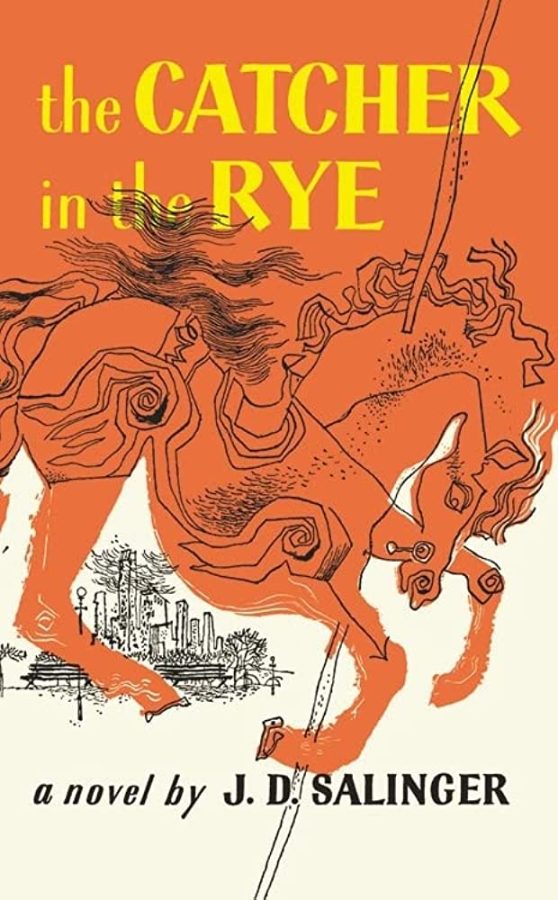Book Review: The Catcher in the Rye, by J.D. Salinger
May 24, 2023
The Catcher in the Rye. An intriguing title, it doesn’t give much away. Instead, the reader is left wondering about the words. What does catcher mean? A baseball catcher? Or some other type? The title of The Catcher in the Rye, by J.D. Salinger seems to represent the book as a whole; it is layered and complex, thoughtful and deep.
Holden Caulfield, the book’s narrator, first appears to just be a classic prep-school boy. We hear him recall how he left all of the fencing team’s foils on a subway in New York on the way to a tournament; how he is being expelled from Pencey Preparatory School because he is flunking most of his classes and doesn’t care. He joshes with his roommates and smokes and generally acts very disillusioned.
Throughout the book, though, he slowly becomes more complex. The reader’s first impression of him slowly fades away, as a more raw, real person is revealed. There are unique memories, facts that lend humanity and emotion to Holden: half of his hair is grey; he broke his hand once, and his fist doesn’t entirely close anymore.
This development certainly would not have occurred, however, without J.D. Salinger’s exquisite writing. Told from Holden’s first-person perspective, it is not formal, but it is strong. Salinger incorporates Holden’s voice into the narration: his rhythms, his speaking habits—for example, Holden likes to add “and all” to the end of his sentences and refer to his acquaintances as “old,” such as “old Ackley.” This style of writing lets the reader feel close to Holden as a character, and shows the reader his true self.
The Catcher in the Rye is, at its heart, a story about the development of one person. Most of the action occurs inside Holden’s head—in his thoughts—and other characters hardly ever appear for more than one scene (in fact, some are never introduced, and are only mentioned in Holden’s narration). This means that most of Holden’s interactions take place with himself; Salinger creates extensive trains of thoughts that sprawl across the page. While these may sometimes seem tedious, they are in fact quite fascinating, quite lovely, quite true. They are another way the reader gets to see the real Holden: not the one who smokes constantly or pretends to be quite disillusioned, but the one who mourns his brother’s death, the one who cares deeply about his kid sister, the one who wants to protect an old summer friend of his.
Catcher is renowned for being a complex portrait of adolescence, of the internal struggles faced by teenagers across time. And indeed it is true. Salinger uses Holden as a representation of teenage angst and worry, of the layers within each of us, of the struggle we all face to determine how our experiences define us, the struggle to learn how to define ourselves. By creating a book that weaves a tapestry of this single person—Holden Caulfield—and gives the reader a deep look inside his thoughts, Salinger explores a complicated person, so the reader can finally see why he wants to be “the catcher in the rye.”




